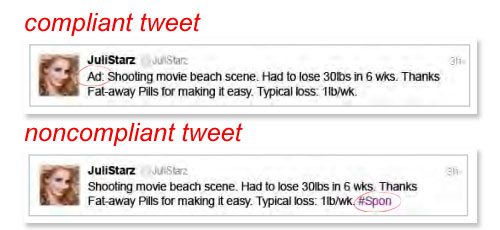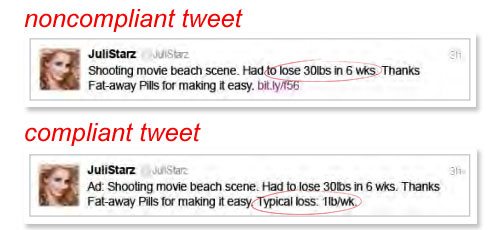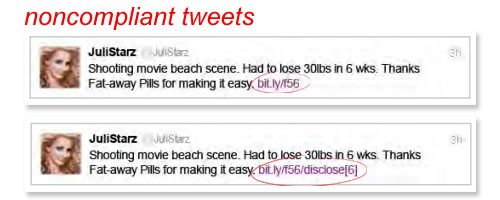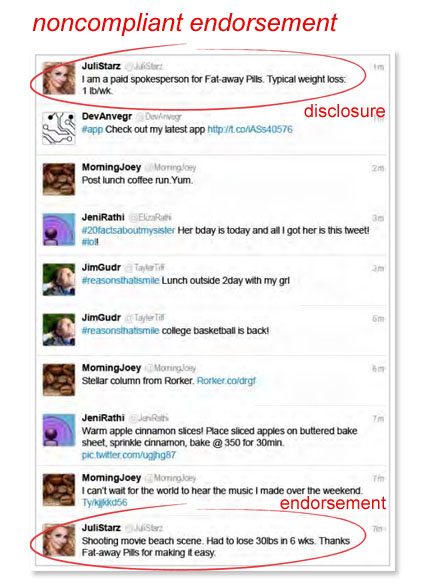A lot can change in 13 years, especially in the online space. But believe it or not, this month the Federal Trade Commission released the first update to its Dot Com Disclosures guidelines since 2000. The goal of the updated document is to ensure that the same consumer protection laws that apply to print, television and radio also apply online, including on mobile devices and social media. That being said, there’s a lot of ground to cover — hence the 50 page document.
The report gives much needed clarification to one major topic: sponsored tweets. Now that the FTC has released its official guidelines, Twitter endorsements have at at long last become “safe” territory for advertisers. Here are a few “do”s and “don’t”s to consider for your brand’s celebrity or thought leader endorsement program.
1. Paid endorsements must be clearly disclosed
The FTC recommends starting endorsement tweets with “Ad:” for disclosure purposes. While not ideal, the indicator only takes up four of your limited characters. The report also notes that since the commonly used “#Spon” hashtag doesn’t clearly communicate paid endorsement, it is not an acceptable form of disclosure.
2. Set reasonable expectations
In the first tweet below, the endorser claims to have lost 30 pounds in six weeks. But since the amount of weight that consumers can generally expect to lose is much less than that, the tweet is noncompliant. In the second example JuliStarz still makes the 30 pounds in six weeks claim once again, but follows with “typical loss: 1lb/wk,” making the tweet compliant. 
3. When using hyperlinks to lead to a disclosure, make the link obvious
Users won’t assume that your bit.ly link is really a form of disclosure. Disclosures should appear within the tweet itself for clarity’s sake, and inclusion of the word “disclose” within the hyperlink does not cut it. 
4. Disclosure should occur within the original endorsement, not as a separate tweet
If disclosure is sent in a secondary tweet, the user may not see the disclosure, or fail to associate it with the original endorsement due to other content in the Twitter feed.
5. Character limits are not an excuse
If character count restrictions make disclosure impossible, the report suggests that advertisers are better off finding a different endorsement platform. Simply put, if you can’t include the disclosure, you shouldn’t publish the endorsement.
What do you make of the FTC’s sponsored tweet guidelines? Will you start utilizing Twitter endorsements now that restrictions are publicly known?
FTC Image from Wikimedia Commons

